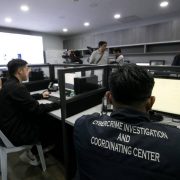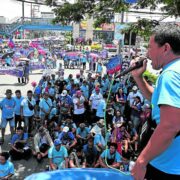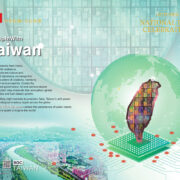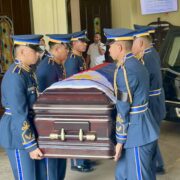I saw the West Philippine Sea with my own eyes
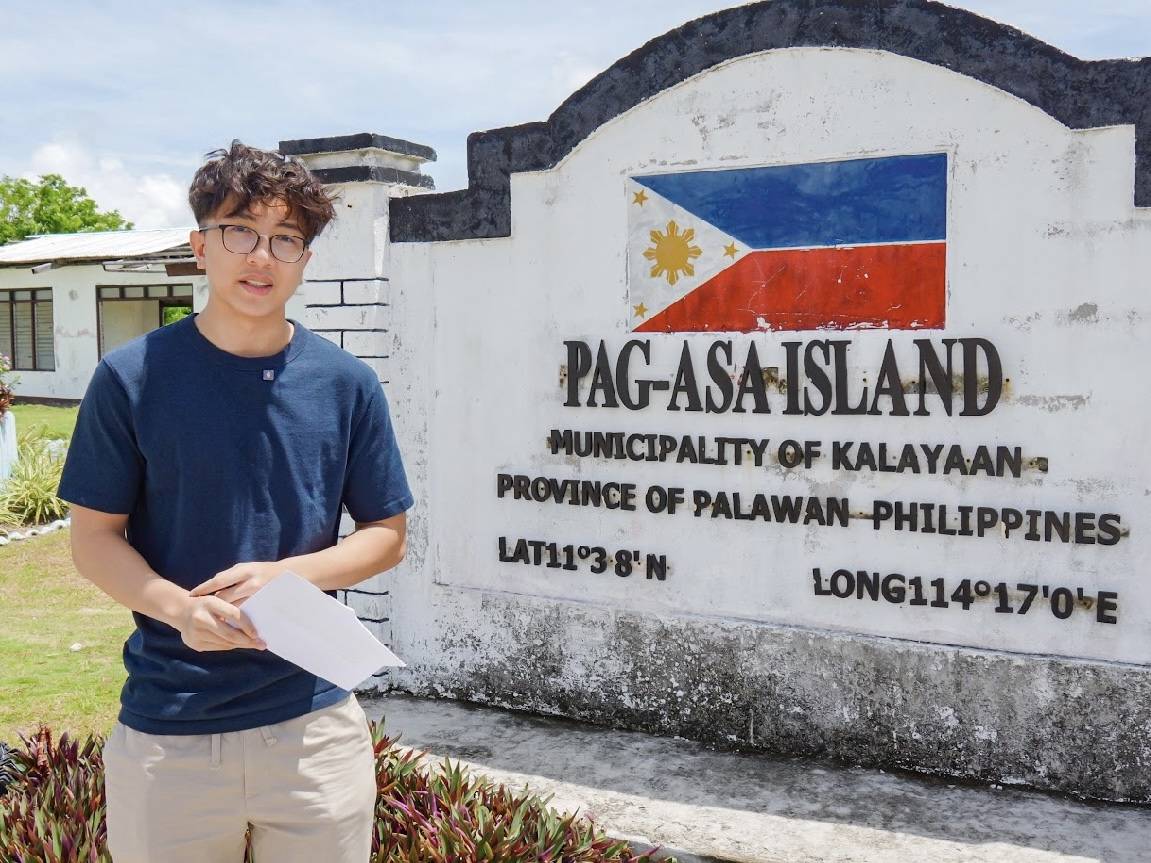
This was no ordinary trip for a 17-year-old like me. I could feel the tension in the air as I looked out my window on the Philippine Coast Guard plane. We were flying above the waters of the West Philippine Sea, and amidst the wide expanse of the blue were Chinese Coast Guard ships scattered on the horizon, fooling me into think they were fishermen because of their sheer number.
It was surreal seeing these Chinese ships for myself, the same ones that occupied my screen while watching the evening news.
It was a beautiful day. Perfect weather. And they were here, imposing upon our exclusive economic zone like any other day. Every day since 2016.
We were en route to Pag-Asa Island, one of our strongholds in the West Philippine Sea, the only island within the Spratlys to have a civilian population with over 400 inhabitants including members of the Philippine Coast Guard and the Philippine Navy.
I was traveling with a group of 10 including journalists led by Philippine Coast Guard Commodore Jay Tarriela, one of the vocal defenders of the West Philippine Sea issue.
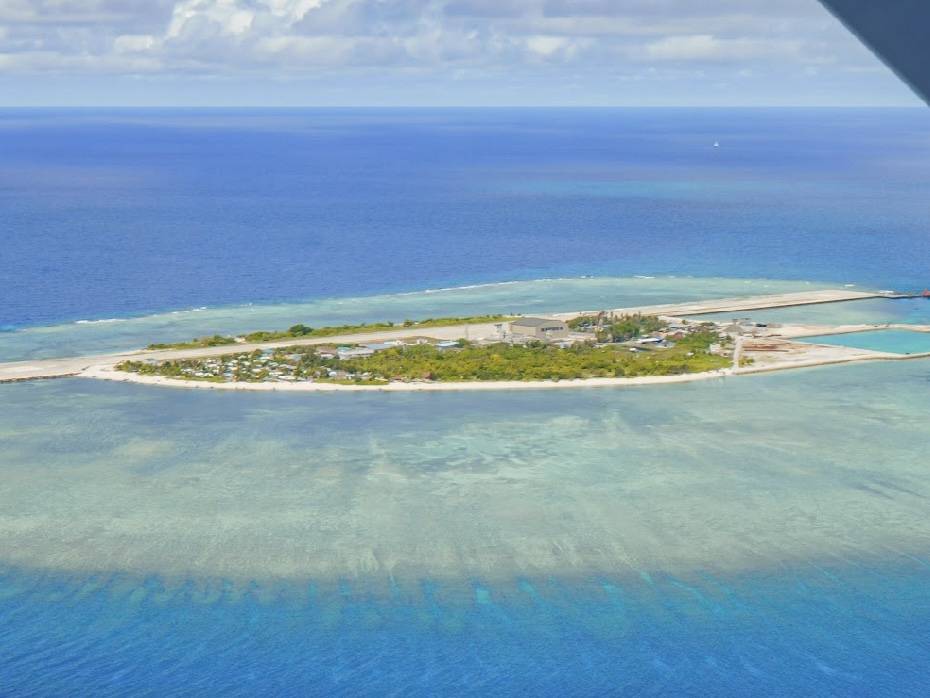
“Pag-Asa is very important, not just because this is a place where we have a local government and residents, but the other relevance is that this is the biggest maritime feature we are currently occupying… This is very relevant in our strategic deployment of our assets. And most importantly for me, Pag-Asa Island represents our fight in the West Philippine Sea. The name itself means hope so I would like to believe that in our position in the West Philippine Sea, there is still hope for it.”
Community
Pag-Asa Island is not only rich in natural oil and gas reserves but as Commodore Tarriela mentioned, it is home to a vibrant and growing community that has been there for decades. The people in the island remain unfazed by threats and the possible danger Chinese Coast Guard vessels pose to the island as they continue to thrive in the face of adversity.
Watching the news on television on the skirmishes, the harassment in the waters of the West Philippine Sea made me see Pag-Asa as a military stronghold, a place that we needed to protect as our last line of defense for the West Philippine Sea. However, the very first hour of the four hours I was there both shifted and solidified that perspective.
Pag-asa literally means “hope” and it radiates all over the faces of people on the island. I saw a simple but thriving community—one with a public school filled with jubilant faces, fishermen walking with fresh catch alongside a navy barracks. I realized the island wasn’t just a symbolic stronghold for our sovereignty, but an act of defiance from a community that refuses to leave and continues to live with so little. A community whose unwavering courage upholds the hope of the entire country as they face the issue head on.
After recording a couple of interviews and taking videos of the Coast Guard ships, I proceeded with my other purpose on the island.
Students and teachers
One of my goals for my visit was to support the community on the island by providing school supplies for the students and teachers on the island. While I was distributing the gifts, I met teacher Realyn Limbo, a kindergarten teacher who’s been in Pag-Asa island since 2015. When she told me she had been here since 2015, I knew she was a living testament of the community’s unwavering courage. She told me that she feels it is the community’s responsibility to stick together because of the difficult situation everyone is in, especially the kids. She talked about how as teachers, they try to prioritize the kid’s education by paying no attention to the threat of the Chinese ships right beside the island.
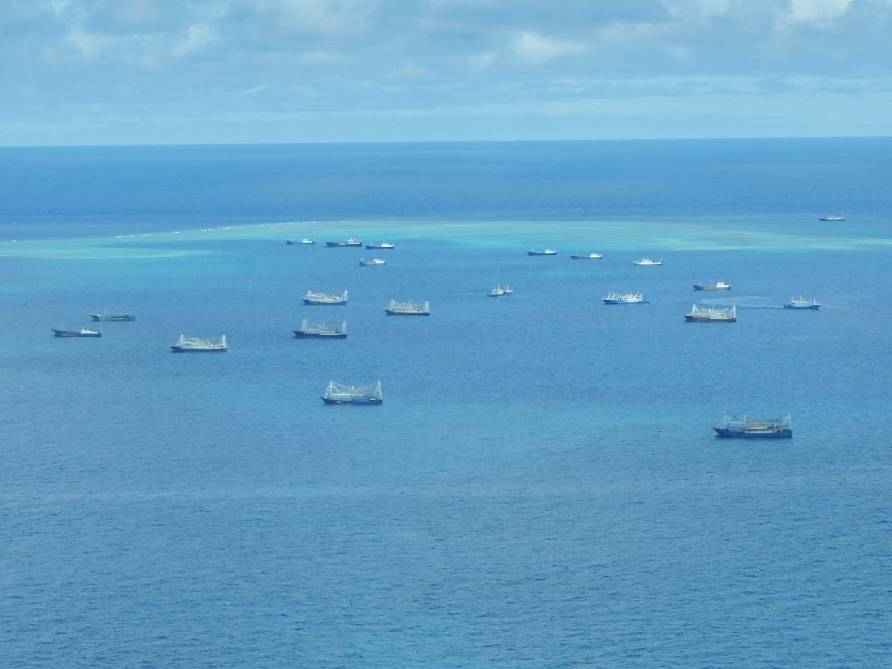
“Sa Pag-Asa ang mga buhay ng mga bata dito ay simple lang. Dito meron lang tindahan tapos nakakabili lang sila ng mga simpleng pagkain, ‘di katulad sa mainland na pwede lahat bilihin mo… Di namin pinaramdam na meron threat sa West Philippine Sea.”
The kids see the vessels every day but they remind them not pay attention to them and focus on studying instead. “Mag-aral lang ng mabuti, wag niyo iisipin ang Chinese na yan.”
However, she noted that the rest of the community is scared. She even thought of leaving Pag-Asa because of the rising tensions but she stayed because of the community and her responsibility to the community.
“Pag nakikita ko yung mga bata, maawa ka na pag iniwan mo, paano na sila? Since Kinder to Grade 6 ako ang nagtuturo, at ngayon hanggang Grade 12. Proud ako sa sarili ko na from elementary nagkaroon tayo ng senior highschool so ang mga isip ng bata aral lang.”
Threats
Every week, the people of Pag-Asa face threats from the Chinese Coast Guard, and we know this. Just last year, we saw multiple accounts of the Chinese Coast Guard harassing Filipino fishermen and taking over our Exclusive Economic Zones. Considering the fact that this issue has been going on since before 2016, I have concluded that the West Philippine Sea issue will be long lasting and will continue well into my adult years. This is a sentiment shared by Commodore Tarriela.
“This is intergenerational. Right now, we are not saying we have a quick fix solution for our position in the West Philippine Sea, but the effort of our government under the presidency of Marcos that we are currently doing is we are holding the line for the next generations to come and continue the fight. We are not promising that in the next coming years we can already solve the issue, but we have to make sure that the next generation of Filipinos would still recognize and give importance to our fight in the West Philippine Sea.”
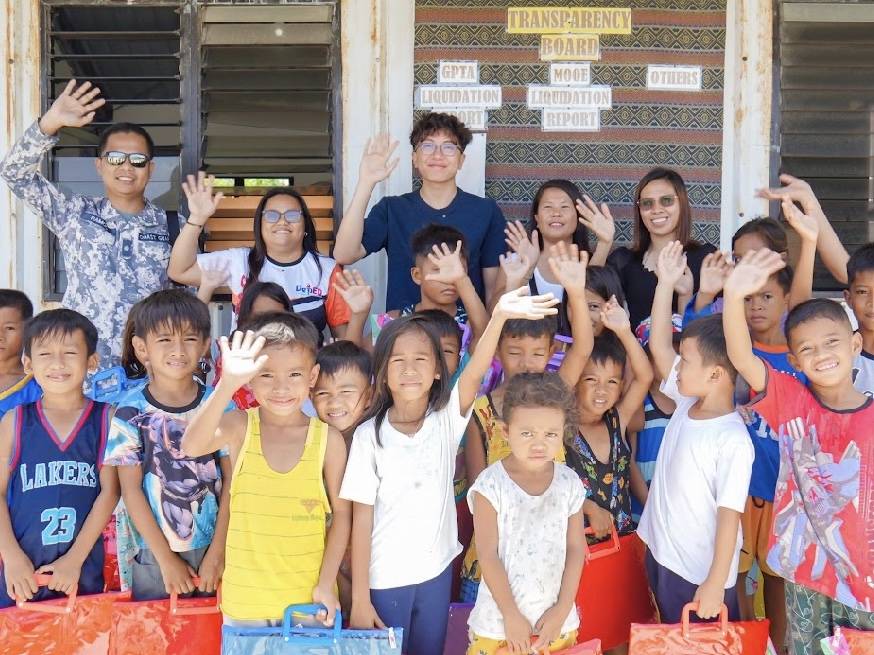
As a high school student taking up Global Politics, I’ve learned all about geopolitical conflicts across the globe and time. It’s difficult to understand the scale at which everything happens when you read it off a page or when you see it on the news. The West Philippine Sea issue is an example of this.
In our waters now, it isn’t only the Chinese Coast Guard present but also Chinese naval ships. The levels of aggression are rising, but Commodore Tarriela says that the tension has always been there.
“This issue has been going on since the ’60s, and even during the time of Duterte. There just hasn’t been news about it.”
Going to Pag-Asa and speaking with the people and with Commodore Tarriela provided me with new perspectives on the fears and the lengths that the people of Pag-Asa and the Philippine Coast Guard go to protect our waters, and how much of it has been left out of news reports in the past. That is why it is important to teach this issue to the future generations, so they also understand the full story. It’s easy to forget and not appreciate the full scale and severity of the West Philippine Sea issue because it seems so far away from our homes in the cities, but what happens out there will affect what happens to everyone in the country.
Like Commodore Tarriela said, “Ang West Philippine Sea, ang laban na ito ay laban ng lahat ng Filipino.” Our fight for the West Philippine Sea is the patriotic duty for our generation today.





